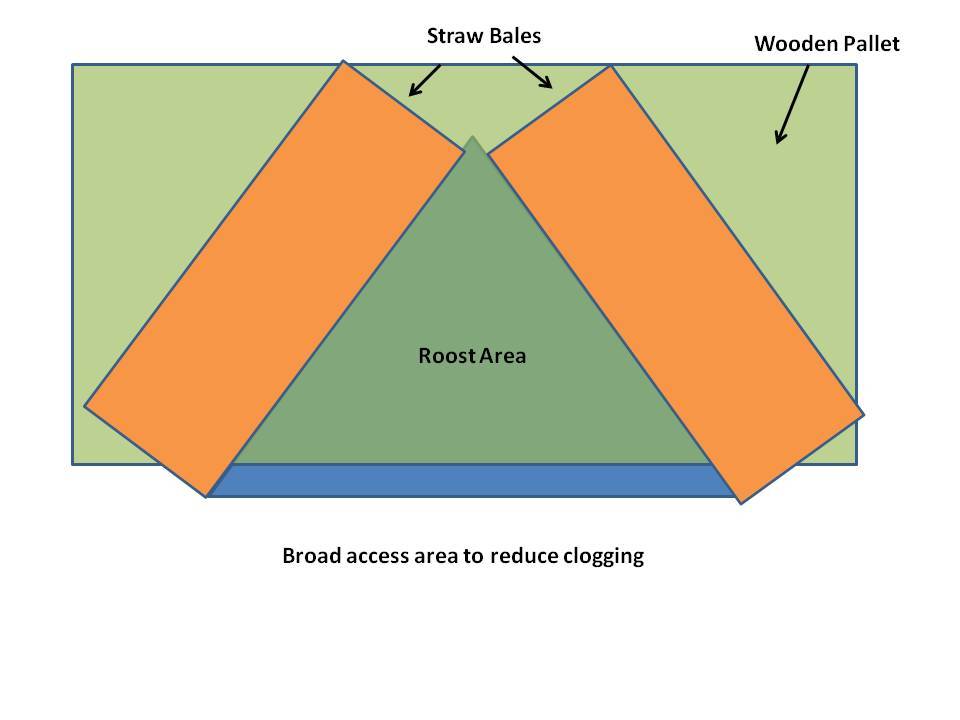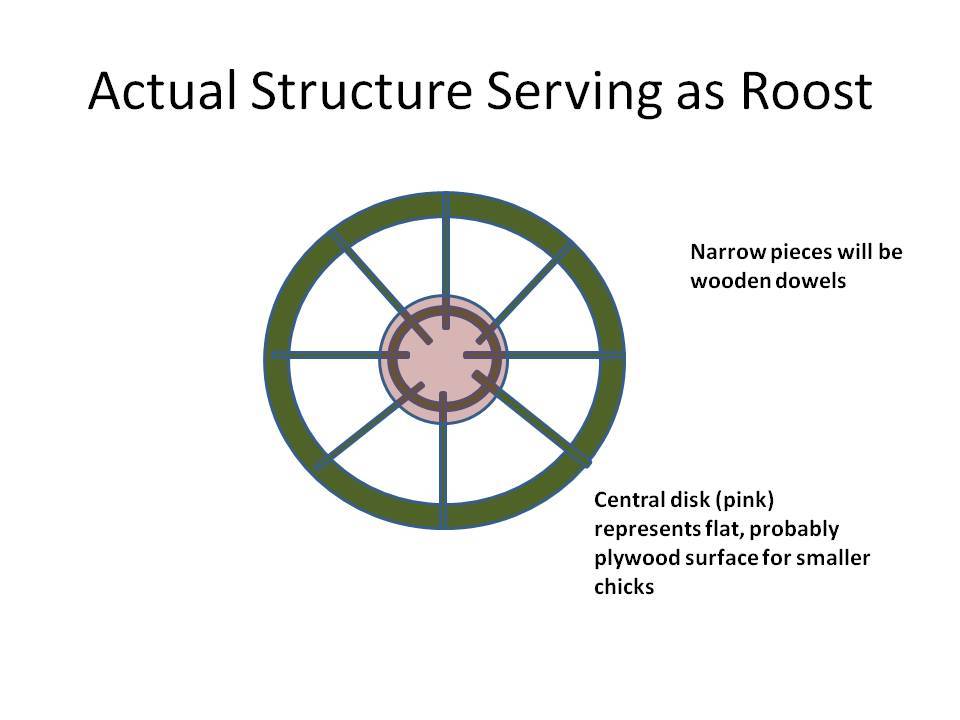- Thread starter
- #21
Proof of concept structure is likely to be made of completely different materials than final product.
This image represents what is in place know.

Final product to be made up of six times as much roosting areas with access all around perimeter. Access points still a weak spot but will be figured out. Image of roof which will likely be metal.

Actual roost will be a challenge. Will be load bearing and have to acomodate needs of chicks as they grow and roost preferences change. When first stocked into roost, chicks will likely prefer to roost on flat surface in a pile. As they grow spreading out and preference for actual perch should be norm. Structure will look somewhat like a wagon wheel. Will be smaller than roof shown above.

No vertical support structures shown. May need to have bottom of roost about 6 feet above ground. Will permit head counts, servicing / cleaning as well as harvesting.
This image represents what is in place know.

Final product to be made up of six times as much roosting areas with access all around perimeter. Access points still a weak spot but will be figured out. Image of roof which will likely be metal.

Actual roost will be a challenge. Will be load bearing and have to acomodate needs of chicks as they grow and roost preferences change. When first stocked into roost, chicks will likely prefer to roost on flat surface in a pile. As they grow spreading out and preference for actual perch should be norm. Structure will look somewhat like a wagon wheel. Will be smaller than roof shown above.

No vertical support structures shown. May need to have bottom of roost about 6 feet above ground. Will permit head counts, servicing / cleaning as well as harvesting.




 very funny
very funny